Related Research Articles
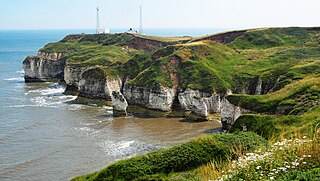
The East Riding of Yorkshire, often abbreviated to the East Riding or East Yorkshire, is a ceremonial county in the Yorkshire and the Humber region of England. It borders North Yorkshire to the north and west, South Yorkshire to the south-west, and Lincolnshire to the south across the Humber Estuary. The city of Kingston upon Hull is the largest settlement.

Haltemprice is an area in the East Riding of Yorkshire, England, directly to the west of Kingston upon Hull. Originally an extra-parochial area, it became a civil parish in 1858, in 1935 it was expanded by the combination of the urban districts of Cottingham, Anlaby, and Sculcoates to form a new urban district; the district included the villages of Anlaby, Cottingham, Hessle, Kirk Ella, Skidby, West Ella and Willerby. Urban districts were abolished 1974.
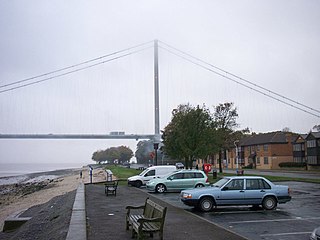
Hessle is a town, civil parish and electoral ward in the East Riding of Yorkshire, England, five miles west of Kingston upon Hull city centre. Geographically it is part of a larger urban area consisting of the city of Kingston upon Hull, the town of Hessle and a number of other villages but is not part of the city. It is on the north bank of the Humber Estuary where the Humber Bridge crosses.

Haltemprice and Howden was a constituency in the East Riding of Yorkshire from 1997 to 2024.

Kingston upon Hull West and Hessle was a borough constituency for the House of Commons of the Parliament of the United Kingdom. It elected one Member of Parliament (MP) at least once every five years by the first-past-the-post electoral system.

Anlaby with Anlaby Common is a civil parish in the East Riding of Yorkshire, England. The parish includes the village suburb of Anlaby and the part of the area known as Anlaby Common.

Swanland is a village and civil parish in the East Riding of Yorkshire in England. The village is about seven miles (11 km) to the west of Kingston upon Hull city centre and two miles (3.2 km) north of the Humber Estuary in the foothills of the Yorkshire Wolds on the B1231 road.
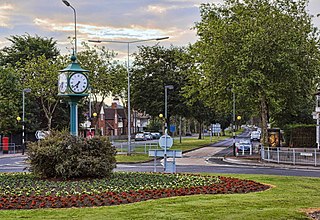
Willerby is a village and civil parish located on the western outskirts of the city of Kingston upon Hull in the East Riding of Yorkshire, England.

Hull City Council, or Kingston upon Hull City Council, is the local authority for the city of Kingston upon Hull in the ceremonial county of the East Riding of Yorkshire, England. Hull has had a council since 1299, which has been reformed on numerous occasions. Since 1996 the council has been a unitary authority, being a district council which also performs the functions of a county council; it is independent from East Riding of Yorkshire Council, the unitary authority which administers the rest of the county.

Kirk Ella is a village and civil parish on the western outskirts of Kingston upon Hull, approximately five miles west of the city centre, situated in the East Riding of Yorkshire, England. The parish includes West Ella.

West Ella is a small village in the civil parish of Kirk Ella, west of Kirk Ella settlement, within the East Riding of Yorkshire, England, on the eastern edge of the Yorkshire Wolds, approximately 6 miles (10 km) west of the city of Kingston upon Hull.

Anlaby is a village forming part of the western suburbs of Kingston upon Hull, in the East Riding of Yorkshire, England. It forms part of the civil parish of Anlaby with Anlaby Common.
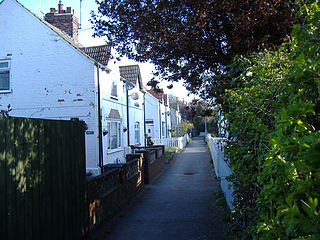
Anlaby Common is former common land, now an outer suburb of Kingston upon Hull. The area includes the residential areas which are located on the western urban fringe of Hull; the B1231 road passes through all of Anlaby Common's estates, east to west.
Haltemprice Priory was an Augustinian monastery approximately two miles south of the village of Cottingham in the East Riding of Yorkshire, England. The original monastic buildings have long since gone, although ruins of a farmhouse, built in 1584, remain on site and incorporate some of the Priory stonework.
The East Riding of Yorkshire is a local government district with unitary authority status, and is a ceremonial county of England. It is named after the historic East Riding of Yorkshire which was one of three ridings alongside the North Riding and West Riding, which were constituent parts a Yorkshire ceremonial and administrative county until 1974. From 1974 to 1996 the area of the modern East Riding of Yorkshire constituted the northern part of Humberside.
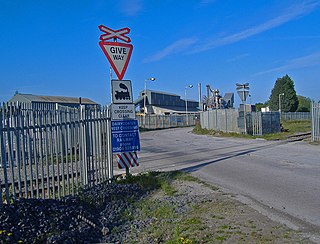
Dairycoates is an area of Kingston upon Hull, East Riding of Yorkshire, England, a former hamlet.

Kingston upon Hull West and Haltemprice is a constituency of the House of Commons in the UK Parliament. Further to the completion of the 2023 Periodic Review of Westminster constituencies, it was first contested in the 2024 general election.
References
- ↑ Tickell 1798, pp. 661–2.
- ↑ Gent 1869, Chap. VII pp. 99–100 (p).
- ↑ A History of the County of York East Riding: Volume 1, The City of Kingston upon Hull. London: Victoria County History. 1969. pp. 1–10. Retrieved 8 July 2024.
- ↑ Tickell 1798, p. 685.
- ↑ Tickell 1798, pp. 93–95.
- ↑ Tickell 1798, pp. 92–3, 96–8.
- ↑ Gent 1869, Chap. VII p. 118 (ccc).
- ↑ Tickell 1798, pp. 141–3.
- ↑ Sheahan, J. J.; Whellan, T. (1856). History and Topography of the City of York; the Ainsty Wapentake; and the East Riding of Yorkshire: Volume II. Beverley. p. 544. Retrieved 8 July 2024.
{{cite book}}: CS1 maint: location missing publisher (link) - ↑ Allison, K. J., ed. (1969), "The City of Kingston upon Hull : Boundaries", A History of the County of York East Riding, vol. 1. The city of Kingston upon Hull, Victoria County Histories, pp. 1–10
- ↑ Kingston upon Hull County of Itself (Vision of Britain) Relationships and changes
Sources
- Gent, Thomas (1869) [1735], Annales Regioduni Hullini : Or, The History of the Royal and Beautiful Town of Kingston-upon-Hull..
- Tickell, John (1798), The History of the Town and County of Kingston Upon Hull ..
- University of Portsmouth, "Kingston upon Hull County of Itself", www.visionofbritain.org.uk, retrieved 7 August 2009